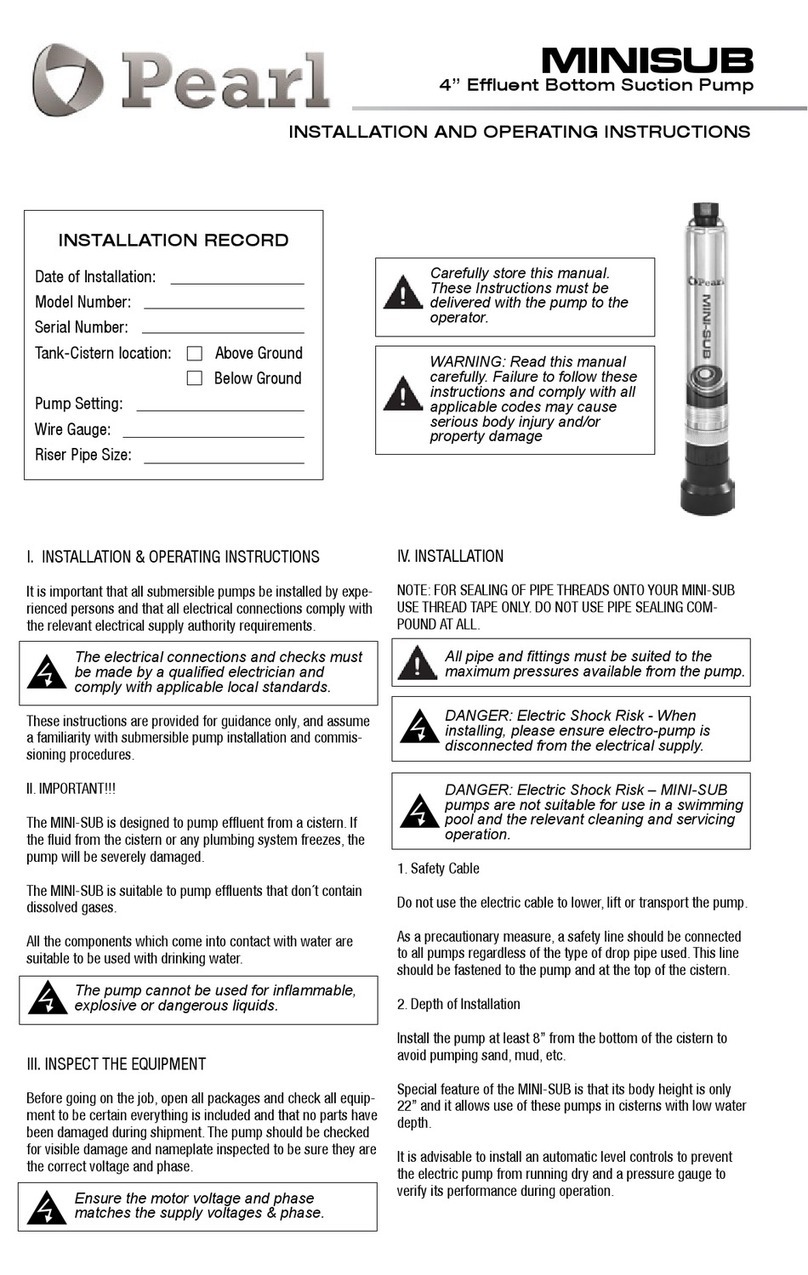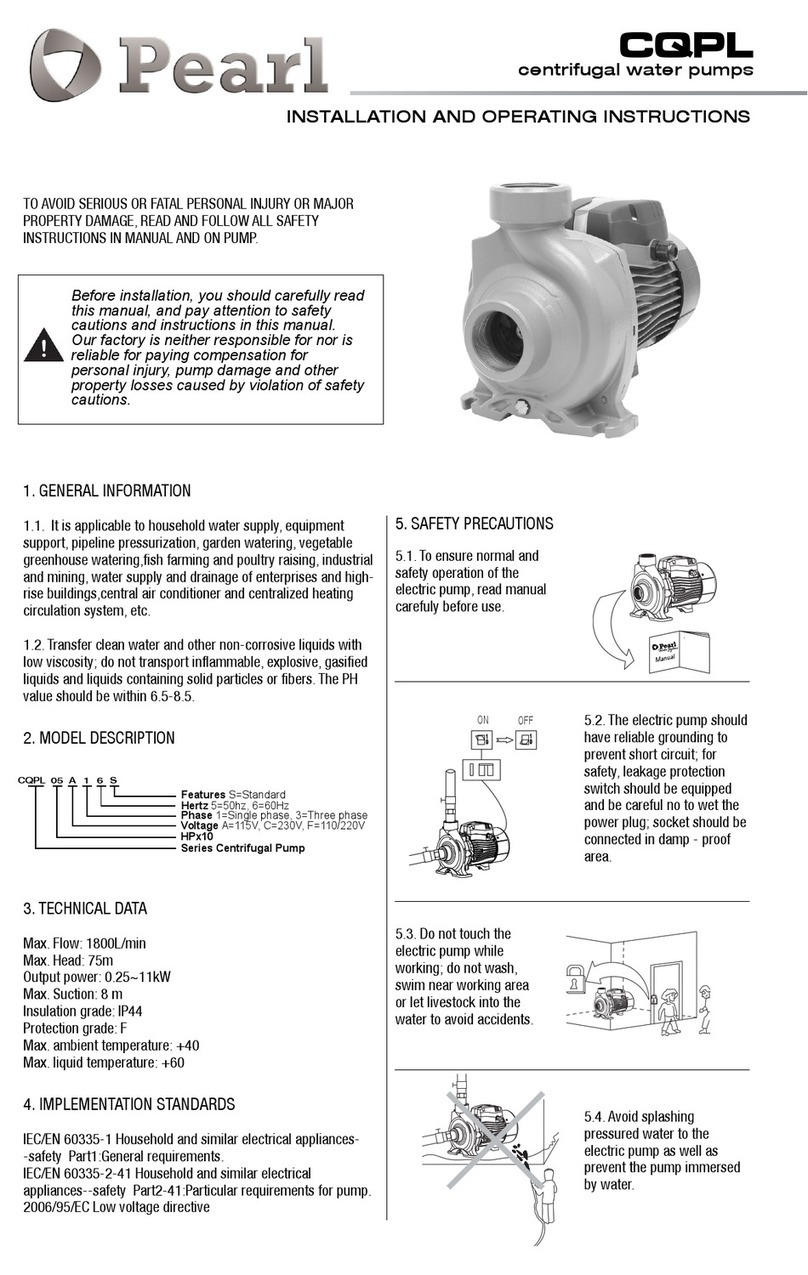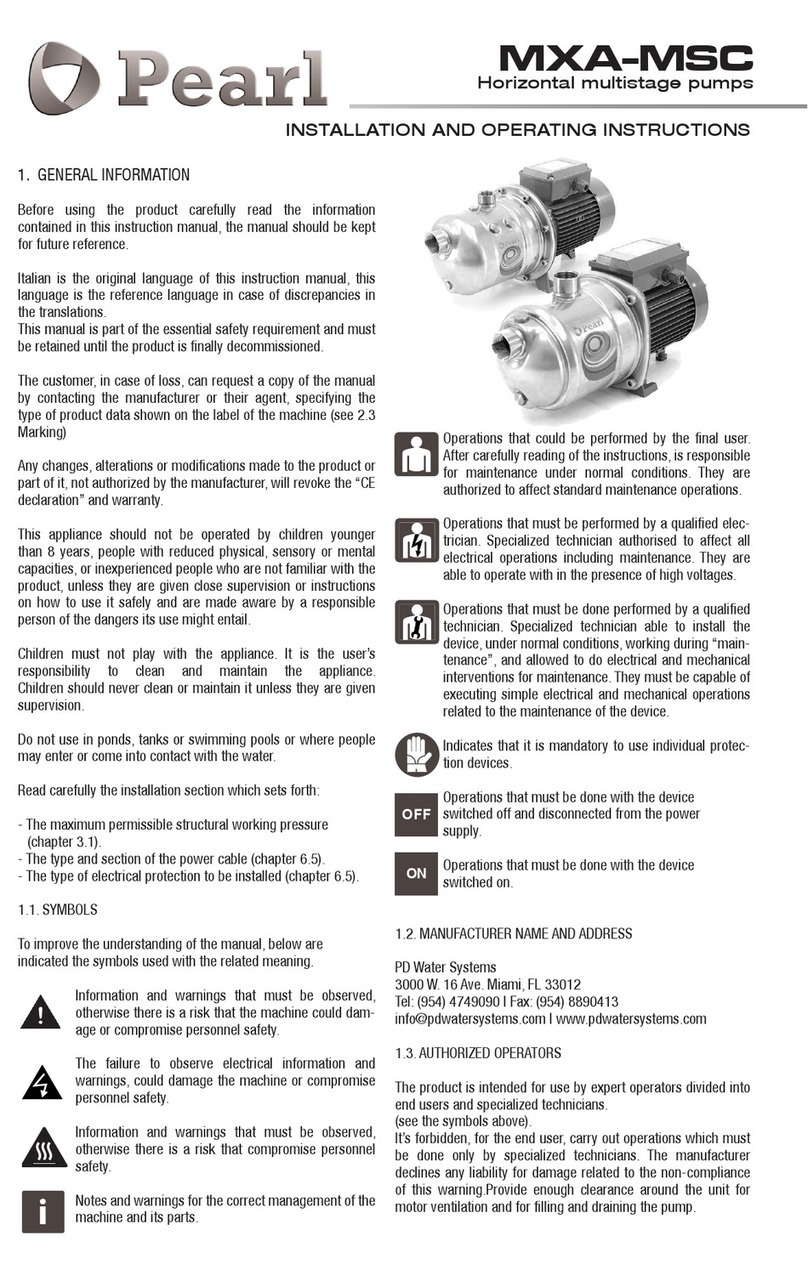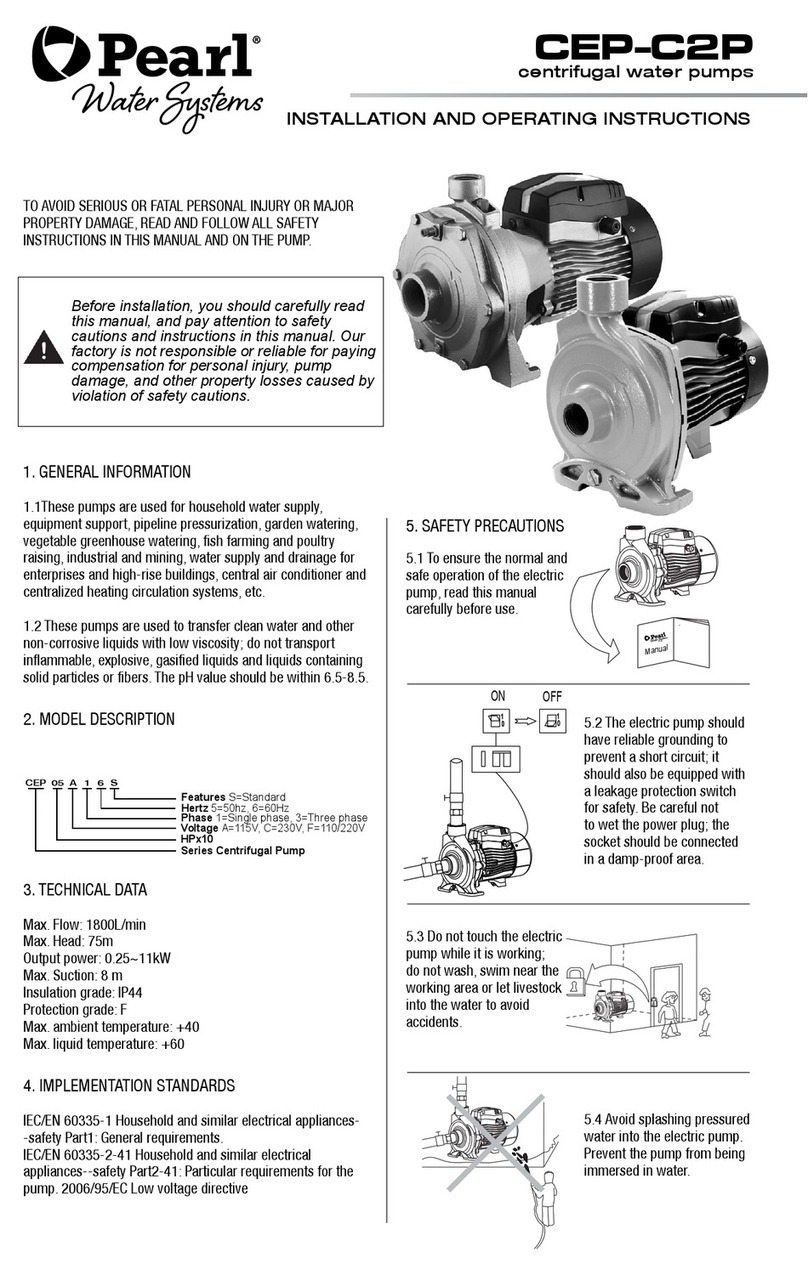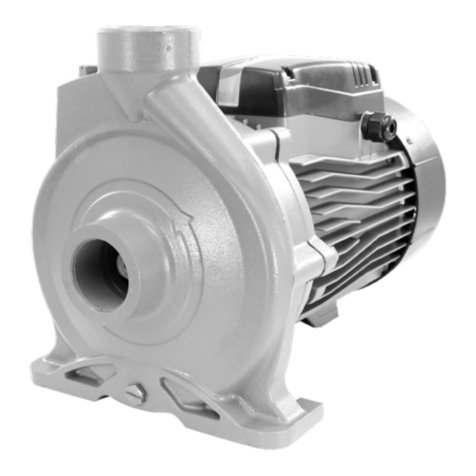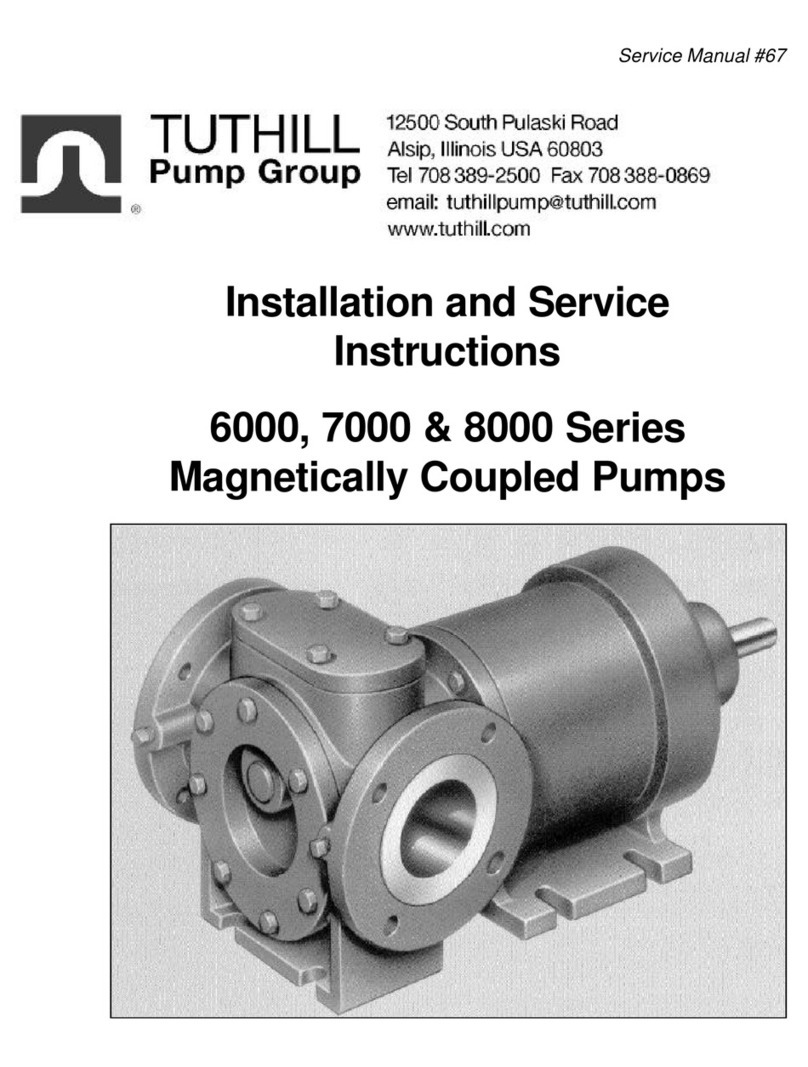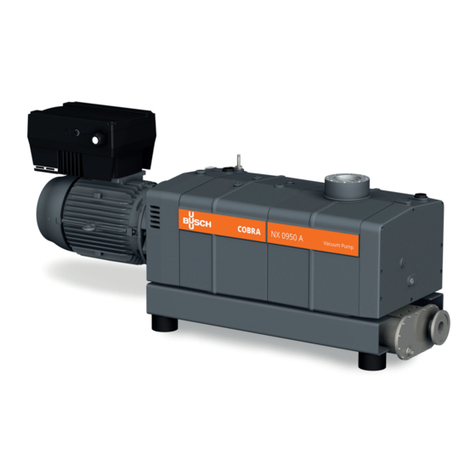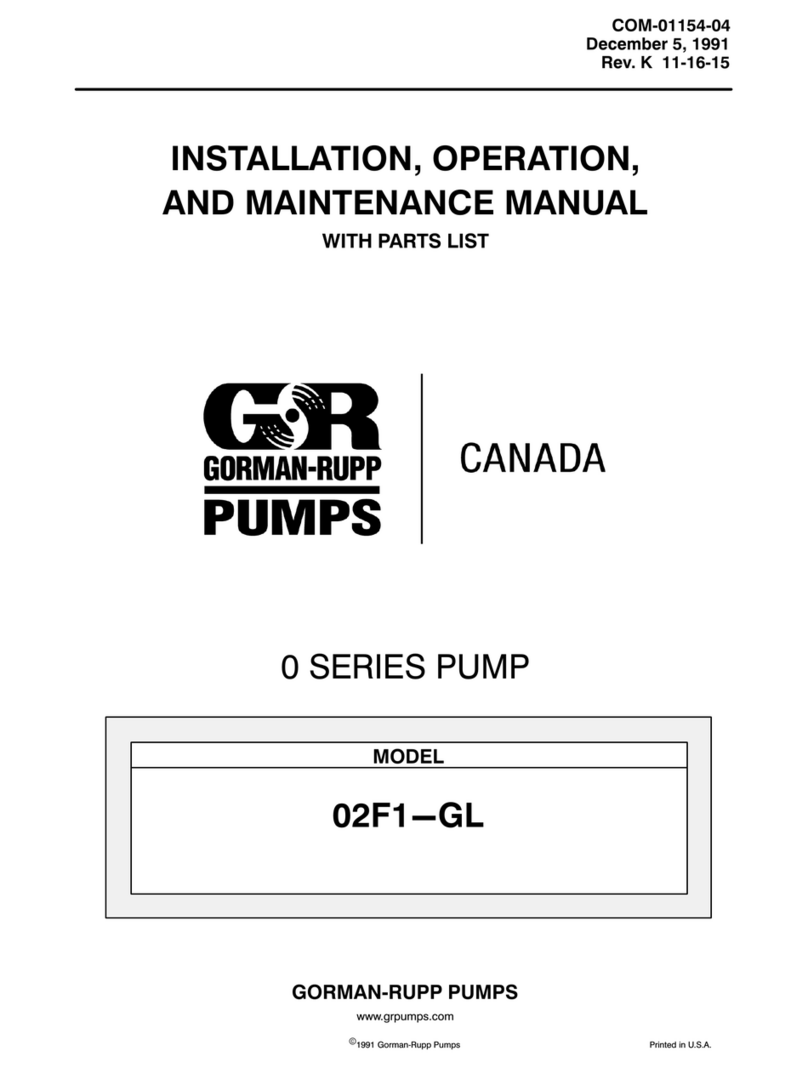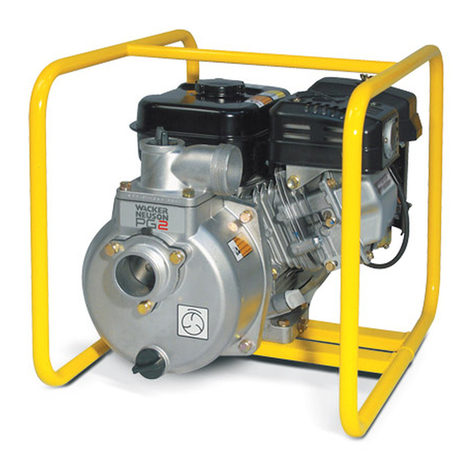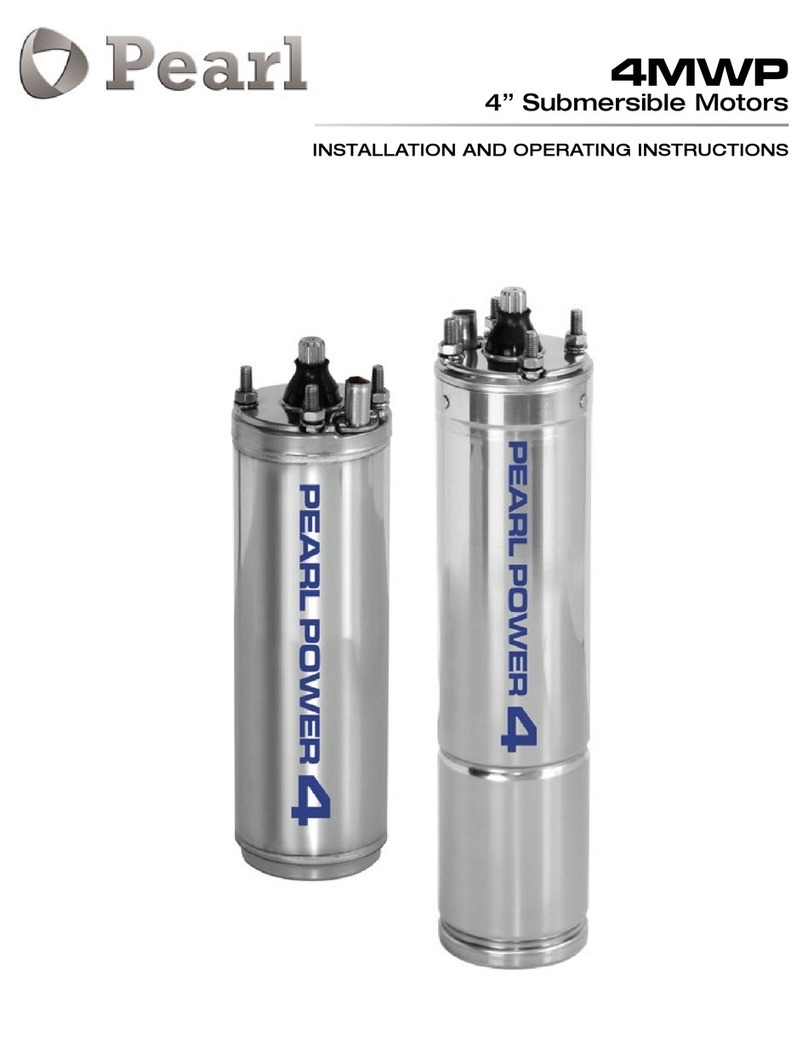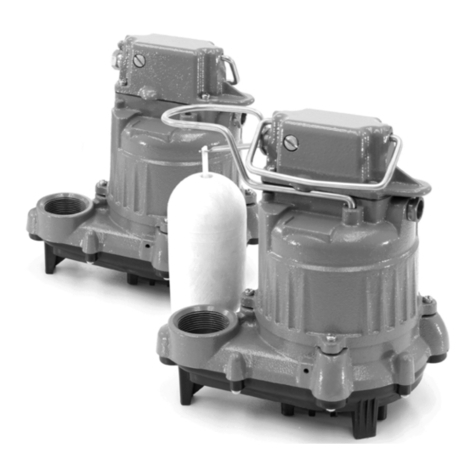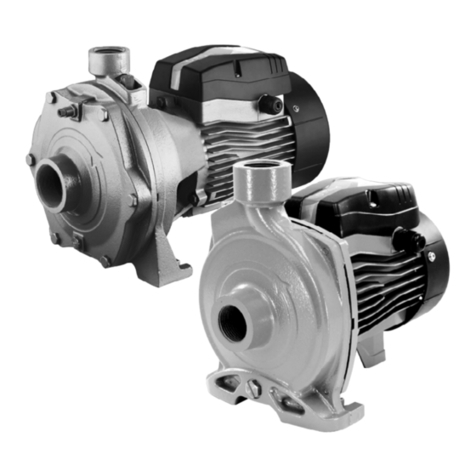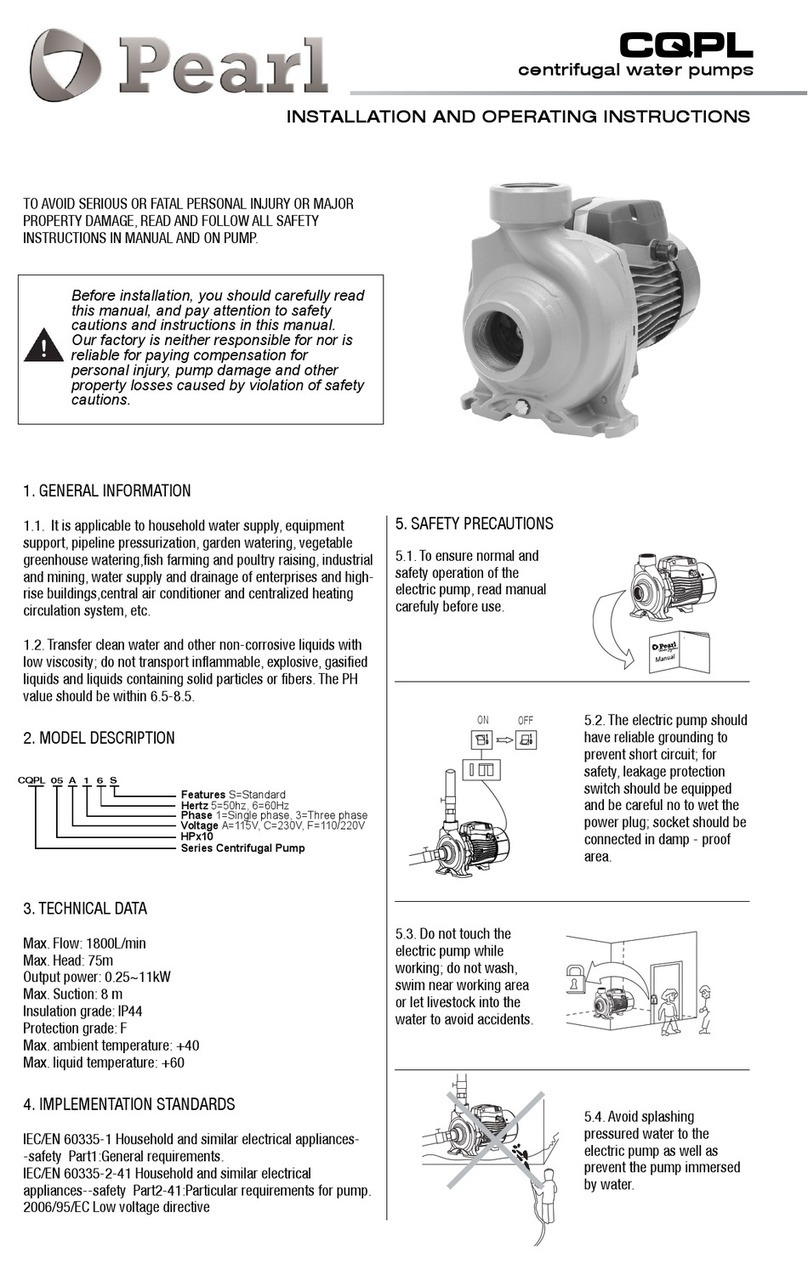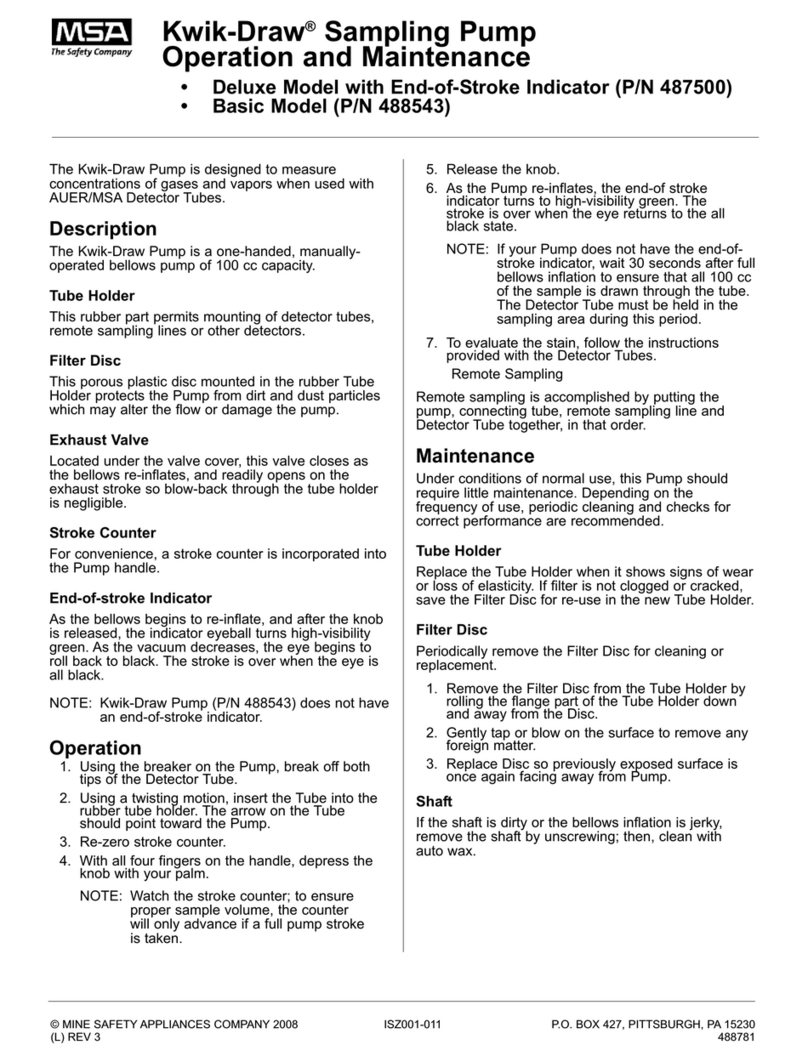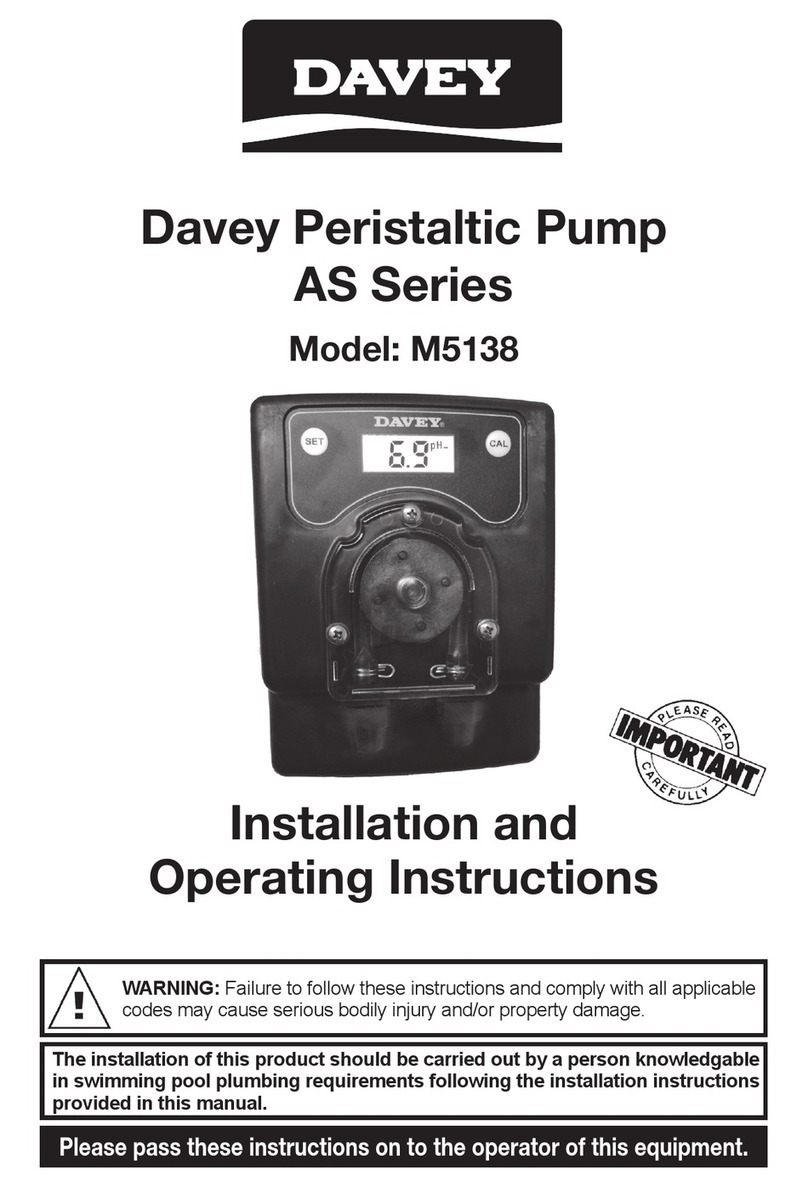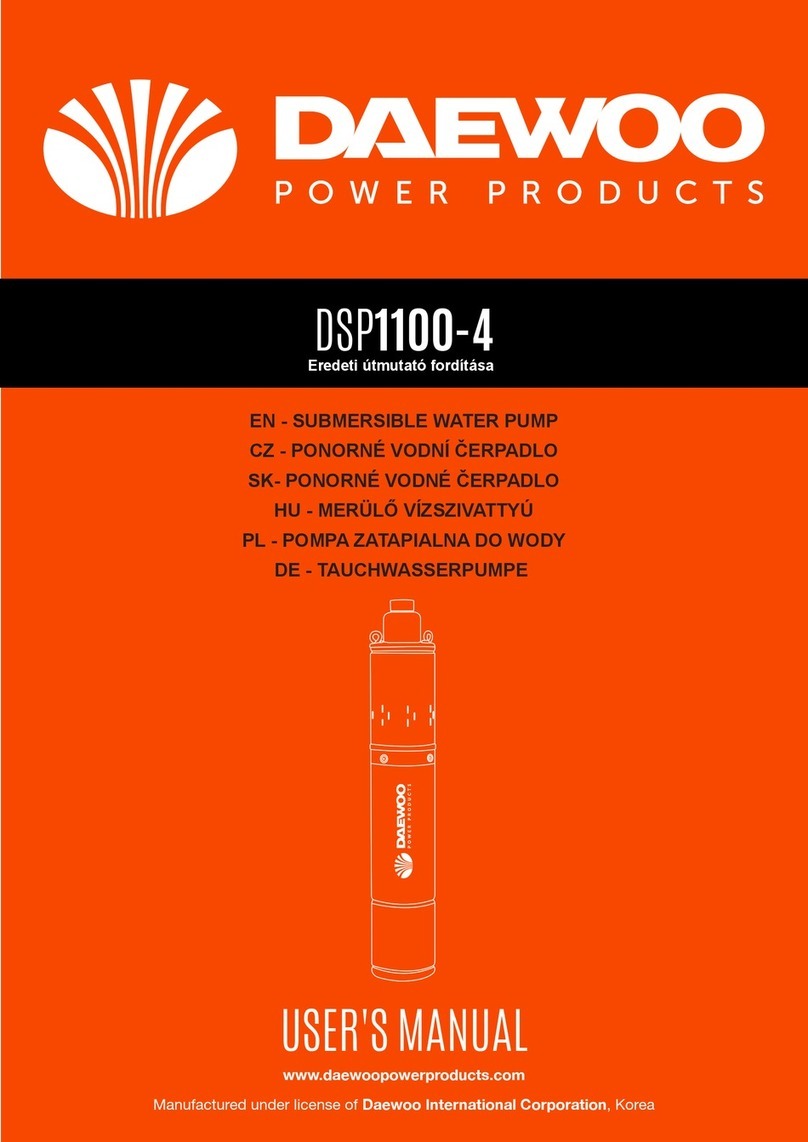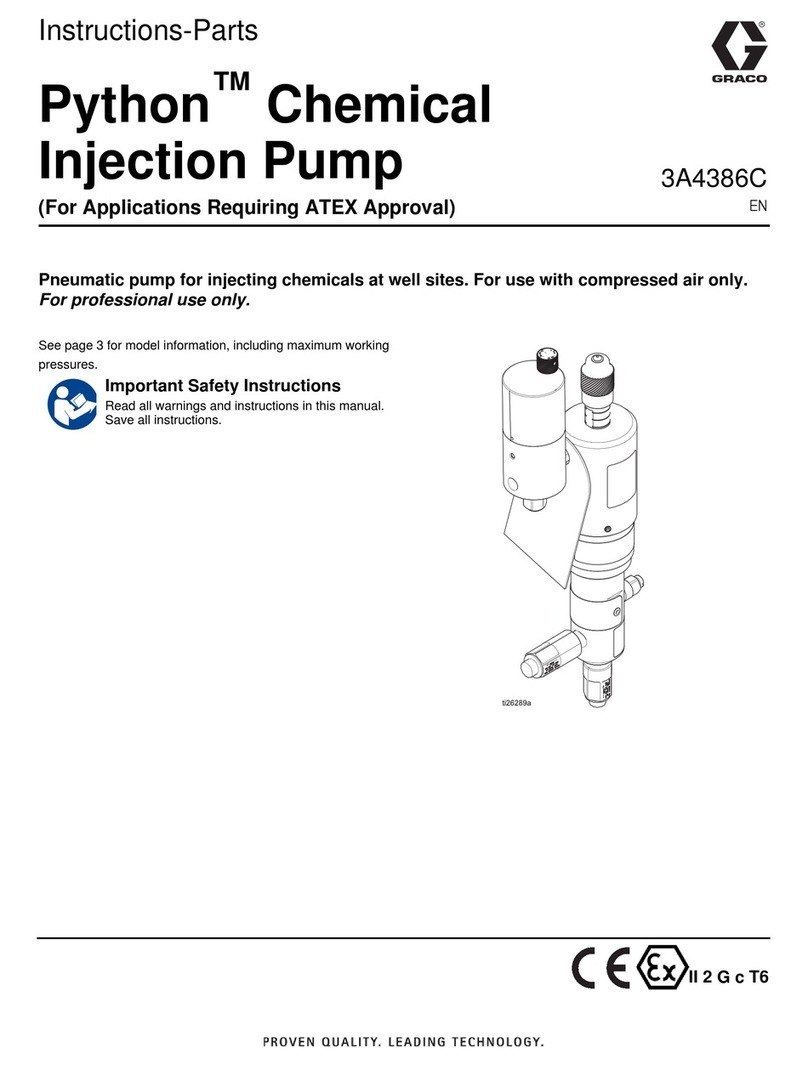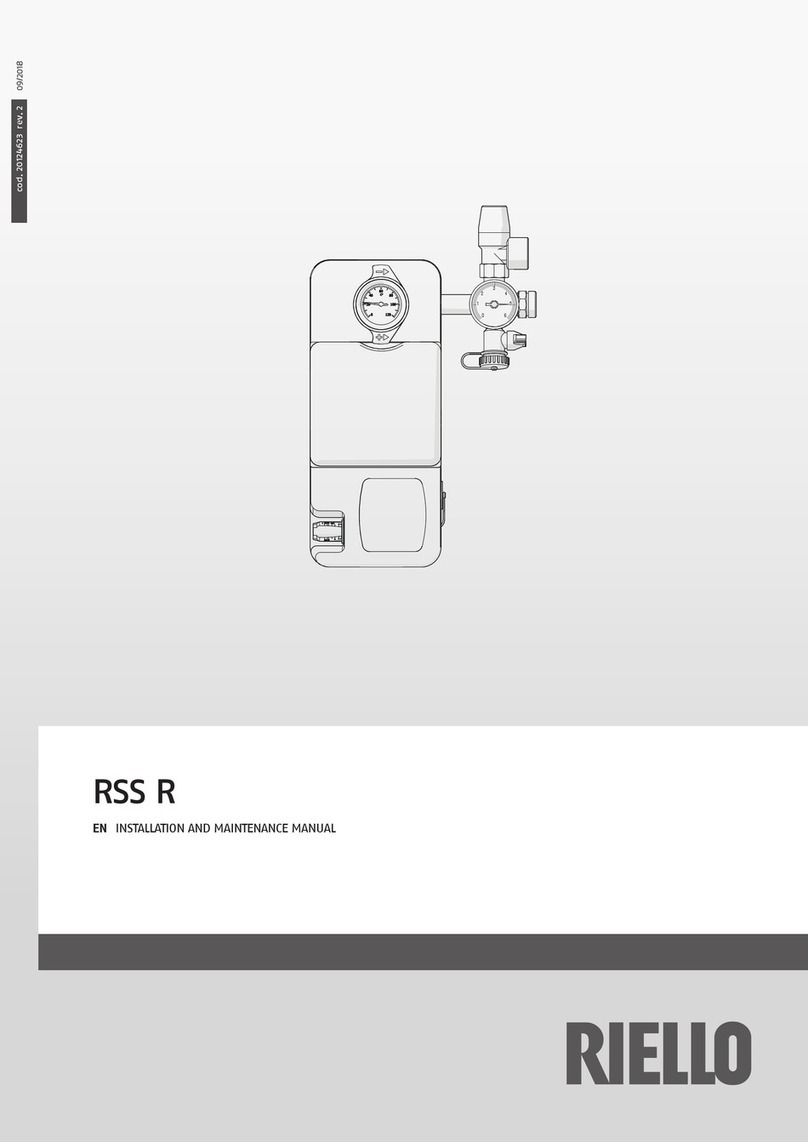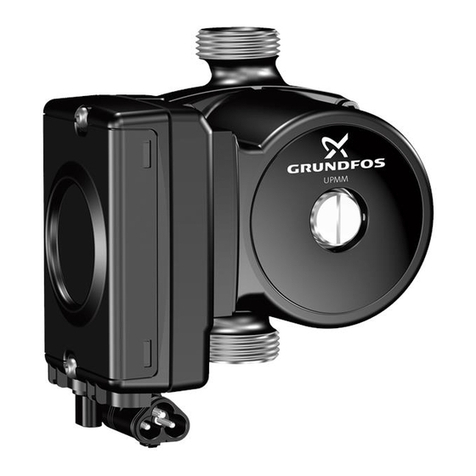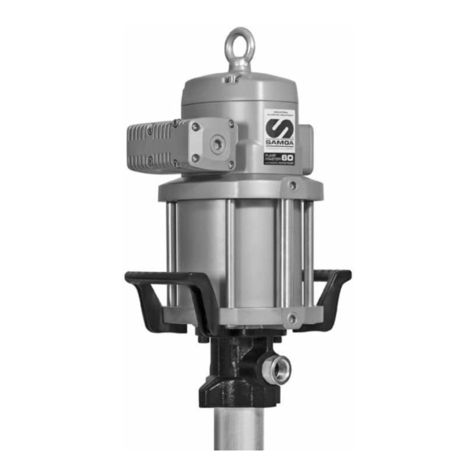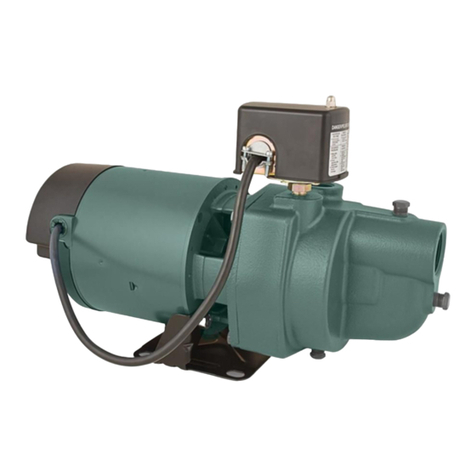
Pos. DESCRIPTION
1 Pipe support: Support piping system properly to avoid stresses
on connections.
2 On-off valves: Install on-off valves for easy access- before the
pump intake and after the pump discharge.
3 Use flexible piping on both input and output sides of the pump
to reduce vibration and transmission of noise.
4 Check valves will prevent return flow of pumped liquid when
pump is stopped, reducing the danger of pump damage.
5Control Panel: Use high quality components. Make sure that
the panel conforms to local standards and regulations.
6 Do not place elbows next to the pump intake and discharge.
7If pump needs to be operated with on-off valve closed, install a
by-pass line to avoid damaging the pumping system.
8
If it is necessary to increase the diameter of the suction pipe,
place an eccentric reducer between the check valve and the
flexible pipe section.
9Using elbows will increase the flow resistance. Wide bends will
result in lesser flow resistance.
10 The piping must have a level or positive gradient to prevent the
formation of air pockets.
11 The diameter of the drop pipe must be bigger than the diam-
eter of the pump’s suction port.
12 Use a foot valve in case of negative suction head.
13 Size pump for correct head.
14 Place the intake of the suction pipe so that the intake is always
submerged to prevent entry of air.
15 Install a compound gauge at the pump suction and a pressure
gauge at the pump discharge.
6. ELECTRICAL CONNECTION
• All electrical connection should be in accordance with the
local regulations and made by a qualified electrician.
• Make sure that the supply voltages and frequencies, and
phase are suitable for the motor used.
• Before proceeding, make sure that all the connections are
grounded and well insulated.
• Overload protection should be provided.
• To connect, proceed as shown on the inside of the terminal
board cover.
• The terminal box can be turned to four positions.
• Check the direction of rotation (Three-phase motor only).
• Make sure that the controls are properly grounded.
• To avoid the possibility of dry running, we strongly
recommend installing dry running protection.
7. START-UP
The pump and suction pipe should be filled with the liquid to be
pumped before start-up to prevent dry running at start-up.
Dry running can damage the pump bearing
and shaft seal.
7.1 Operation
• Start the pump and check the direction of rotation of the
motor (Three –Phase motors).
• Start the pump, keeping the on-off valve of the discharge
side of the pump closed. Then, open the on-off valve
slowly. The pump must run smoothly and noiselessly. If
not, then it may be necessary re-prime the pump.
• Check the current drawn of the motor. If necessary, adjust
the setting of the thermal relay.
• Any air pockets trapped inside the pump may be released
by adjusting the air screw.
If the pump is installed in a location where it
is subject to freezing when not in operation,
then the pump and the pipe system should
be drained to prevent damage from freezing.








